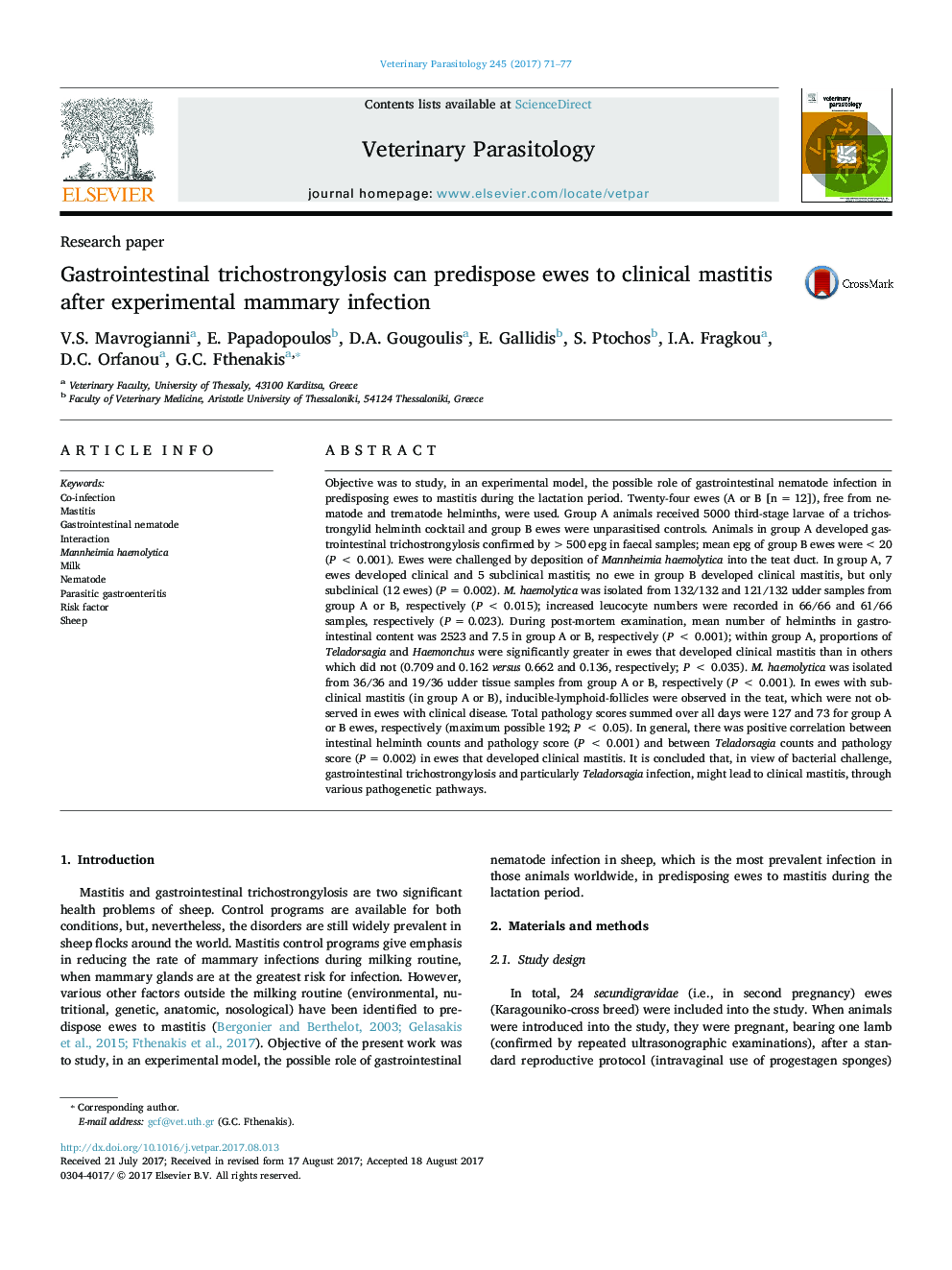| کد مقاله | کد نشریه | سال انتشار | مقاله انگلیسی | نسخه تمام متن |
|---|---|---|---|---|
| 5545679 | 1555631 | 2017 | 7 صفحه PDF | دانلود رایگان |

- Sheep: role of gastrointestinal nematode infection in predisposing to mastitis was studied.
- Gastrointestinal trichostrongylosis might lead to clinical mastitis.
- Effect of Teledorsagia helminths was more significant.
- Various pathogenetic pathways can be involved.
Objective was to study, in an experimental model, the possible role of gastrointestinal nematode infection in predisposing ewes to mastitis during the lactation period. Twenty-four ewes (A or B [n = 12]), free from nematode and trematode helminths, were used. Group A animals received 5000 third-stage larvae of a trichostrongylid helminth cocktail and group B ewes were unparasitised controls. Animals in group A developed gastrointestinal trichostrongylosis confirmed by >500 epg in faecal samples; mean epg of group B ewes were <20 (P < 0.001). Ewes were challenged by deposition of Mannheimia haemolytica into the teat duct. In group A, 7 ewes developed clinical and 5 subclinical mastitis; no ewe in group B developed clinical mastitis, but only subclinical (12 ewes) (P = 0.002). M. haemolytica was isolated from 132/132 and 121/132 udder samples from group A or B, respectively (P < 0.015); increased leucocyte numbers were recorded in 66/66 and 61/66 samples, respectively (P = 0.023). During post-mortem examination, mean number of helminths in gastrointestinal content was 2523 and 7.5 in group A or B, respectively (P < 0.001); within group A, proportions of Teladorsagia and Haemonchus were significantly greater in ewes that developed clinical mastitis than in others which did not (0.709 and 0.162 versus 0.662 and 0.136, respectively; P < 0.035). M. haemolytica was isolated from 36/36 and 19/36 udder tissue samples from group A or B, respectively (P < 0.001). In ewes with subclinical mastitis (in group A or B), inducible-lymphoid-follicles were observed in the teat, which were not observed in ewes with clinical disease. Total pathology scores summed over all days were 127 and 73 for group A or B ewes, respectively (maximum possible 192; P < 0.05). In general, there was positive correlation between intestinal helminth counts and pathology score (P < 0.001) and between Teladorsagia counts and pathology score (P = 0.002) in ewes that developed clinical mastitis. It is concluded that, in view of bacterial challenge, gastrointestinal trichostrongylosis and particularly Teladorsagia infection, might lead to clinical mastitis, through various pathogenetic pathways.
Journal: Veterinary Parasitology - Volume 245, 15 October 2017, Pages 71-77